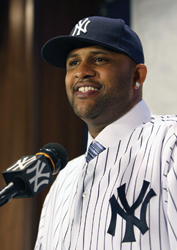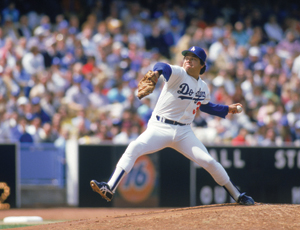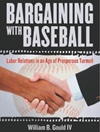Stanford Law School professor Bill Gould, former chairman of the National Labor Relations Board, has authored a new book “Bargaining with Baseball: Labor Relations in an Age of Prosperous Turmoil” (McFarland).
In 1995, Gould, in his role with the NLRB, cast the deciding vote to obtain the injunction that brought an end to baseball’s longest work stoppage, one that cost MLB the 1994 World Series. Since then, MLB and the MLB Players Association have reached a series of new collective-bargaining agreements
that will assure the league of 21 years of uninterrupted labor peace, including agreeing most recently to a deal in November that runs through 2016.
Gould in his book looks at the history of labor relations in baseball and the game both on and off the field. The following excerpt, specifically, spotlights gains for both the league and the players because of the development of the players’ union in the sport.
The game’s beauty and drama make it difficult for some to see players as employees. Indeed, baseball’s owners insisted that the players were not employees within the meaning of the National Labor Relations Act, the principal labor relations statute in the United States, which has been at the center of so many controversies between the players and owners since the 1960s. Hitting, running, the long run that is necessary to corral a long fly or line drive — these are all joyful experiences, the memories of which are enhanced with each passing year. But the relevant quasi-judicial administrative agency, the National Labor Relations Board, nonetheless concluded that players in all major sports, as well as umpires, were employees affected by issues of compensation and working conditions at the dawn of a wide variety of sports-related labor disputes. …
Collective bargaining has now become the forum for differences between the parties in baseball. Previously it was the courts which had been involved with disputes between players and owners every time a rival league emerged, particularly at the turn of the century before the establishment of organized baseball in 1901, and again at the time of its rival’s establishment, the Federal Baseball League in 1914. Players sought to “jump” from one league to another to enhance their earnings, and for the same reasons, owners sought to restrain them through contract and the reserve clause, which obligated a player to stay with a team beyond the contract expiration date. …
This took place alongside another development which was to prove unsuccessful in the short run (but, as noted, most successful in the long run): the attempt to form a union under the leadership of ex-National Labor Relations Board lawyer Robert Murphy. The effort fell by the wayside in the summer of 1946 when the Pittsburgh Pirates, at the urging of “blooper” pitch specialist “Rip” Sewell, refused to support the union and facilitated his teammates’ ballot rejection of a strike. The owners instituted a pension fund soon thereafter, co-opting some of the leading players in the process. An attack upon the reserve system in baseball, let alone the idea that a union could properly represent the players, was at this point beyond the wildest stretch of anyone’s imagination.
 |
An environment created by a strong union helped Sabathia and other players land multiyear and multimillion-dollar contracts.
Photo by: GETTY IMAGES
|
Fast forward now to the turn of this century. The extraordinary free-agent contracts of 2001 and ’07 signed by [Alex] Rodriguez, and in ’09 by [CC] Sabathia and [Mark] Teixeira, resulted from an environment created by the strong players union, beginning in the late ’60s and ’70s, and the legal machinery supporting it. … The success of the union lay in not simply its hardnosed bargaining tactics but also in the utilization of the negotiated arbitration machinery contained in its collective bargaining agreement. It was successful in preserving the fruits of free agency obtained through this process in a series of disputes in the ’70s, ’80s, and ’90s – the “thirty years’ war” of player-owner labor disputes which came to a conclusion in 1995.
These developments have affected virtually everything in baseball, the most immediate and obvious illustrations being not only the player salaries but their conditions of employment, both at home ballparks and during travel on the road. Players in the post-World War II period, and for a substantial period thereafter, roomed with one another, something that never happens today! It has affected the relationship between managers and players as the former group’s salaries have been dwarfed by the players’ in most instances. And it has affected the way in which player performances are measured, the use of statistical data to determine what salary should be provided to a player, either through free-agency negotiations or through the salary arbitration process which is rooted in comparisons to others — and which in turn is used as evidence in free agency negotiations. The labor component has made owners more interested in competing for available dollars with the other major sports, raising revenues through ticket prices, radio and television contracts, and the sale of licensed products both home and abroad.
 |
Fernando Valenzuela helped the Dodgers capture the hearts of Hispanic fans in the 1980s.
Photo by: GETTY IMAGES
|
It may be that the most important development of all is globalization, something which was well under the radar screen until the beginning of the 1980s and the emergence of Los Angeles Dodger ace Fernando Valenzuela, a talented and colorful personality looking skyward in the midst of his dramatically long wind-up. He made the Dodgers realize that the “Valenzuela fever” or “Fernando mania” brought to them the loyalty and attendance of Mexican immigrants in southern California. A decade and a half later the Dodgers were to do it again with Hideo Nomo, who exploited available Japanese contract loopholes to bring his hands-high-over-the-head-in-hesitation pitching delivery to Los Angeles.
Of course, traditionally a number of American players came from Latin America, particularly countries like Cuba (where the game is truly the national pastime) and Venezuela at mid-century. Even the racially bigoted Washington Senators went after light-skinned Latin American players while they closed their doors to black Americans. But the numbers of foreigners have now increased to almost a third of all major league players, coming from the Dominican Republic, Mexico, South Africa, Japan, Korea, Taiwan and Australia — with Europe, mainland China, and Africa appearing to be part of baseball’s twenty-first century future.
This has meant new venues for radio and television contracts abroad, as well as markets for shirts, caps, and a wide variety of other products licensed by Major League Baseball, revenues from which the MLB franchises share equally. It has meant, in the case of Japan and Korea, agreements between Major League Baseball and those countries which regulate the process through which players move back and forth across national boundaries. And it has meant large fees paid to American teams by Japanese companies to advertise their product in Japan, where a nation watches raptly the performance of Japanese players abroad.
anxious
In Latin America it has meant the establishment of baseball academies in countries like the Dominican Republic, which, along with Venezuela, supplies a plurality of the Major League Baseball talent. …
And in 2006 the landmark World Baseball Classic — the first of its kind — was played in the United States, Latin America and the Far East. Another one was played in 2009! This enhanced the prospect of a true World Series and true World Championship at some point in the twenty-first century, as well as possible expansion of baseball to other countries and the internationalization of norms and standard to apply to relationships between players and owners across national boundaries. Notwithstanding the fact that jet travel has not progressed substantially beyond what it was in the 1950s and ’60s, thus making a genuine international league with head-to-head competition at this point fanciful, future institutional international arrangements or leagues are nonetheless possible. They can and should happen.







